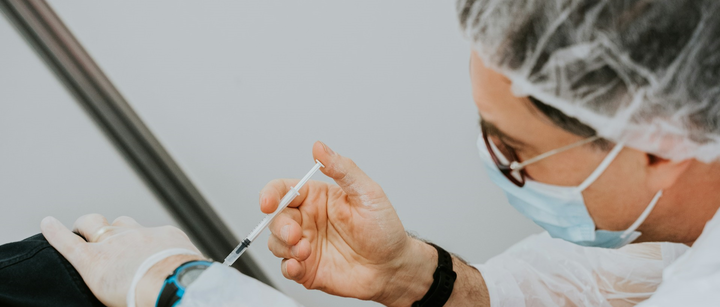



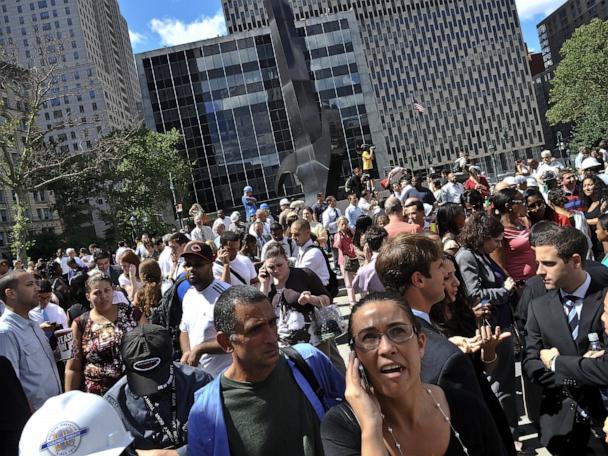
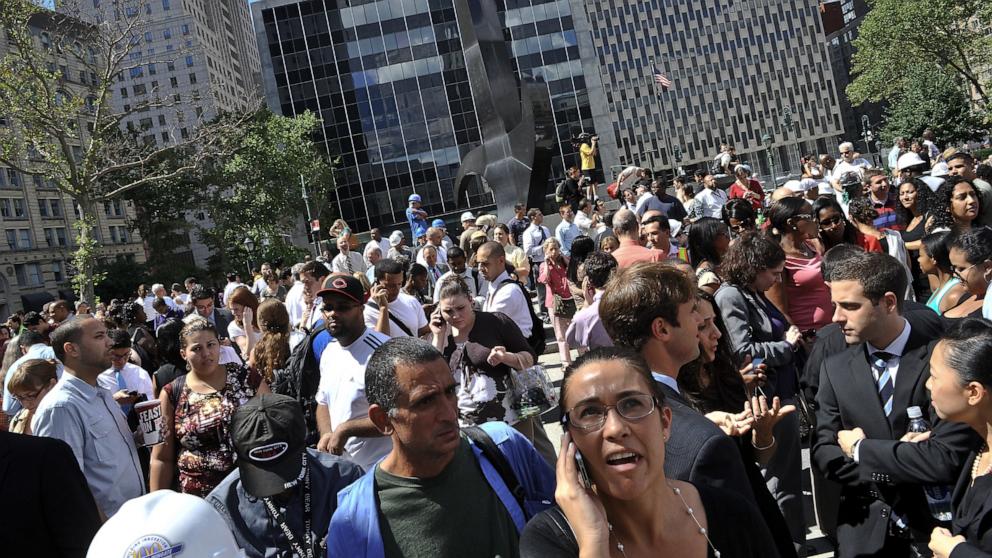
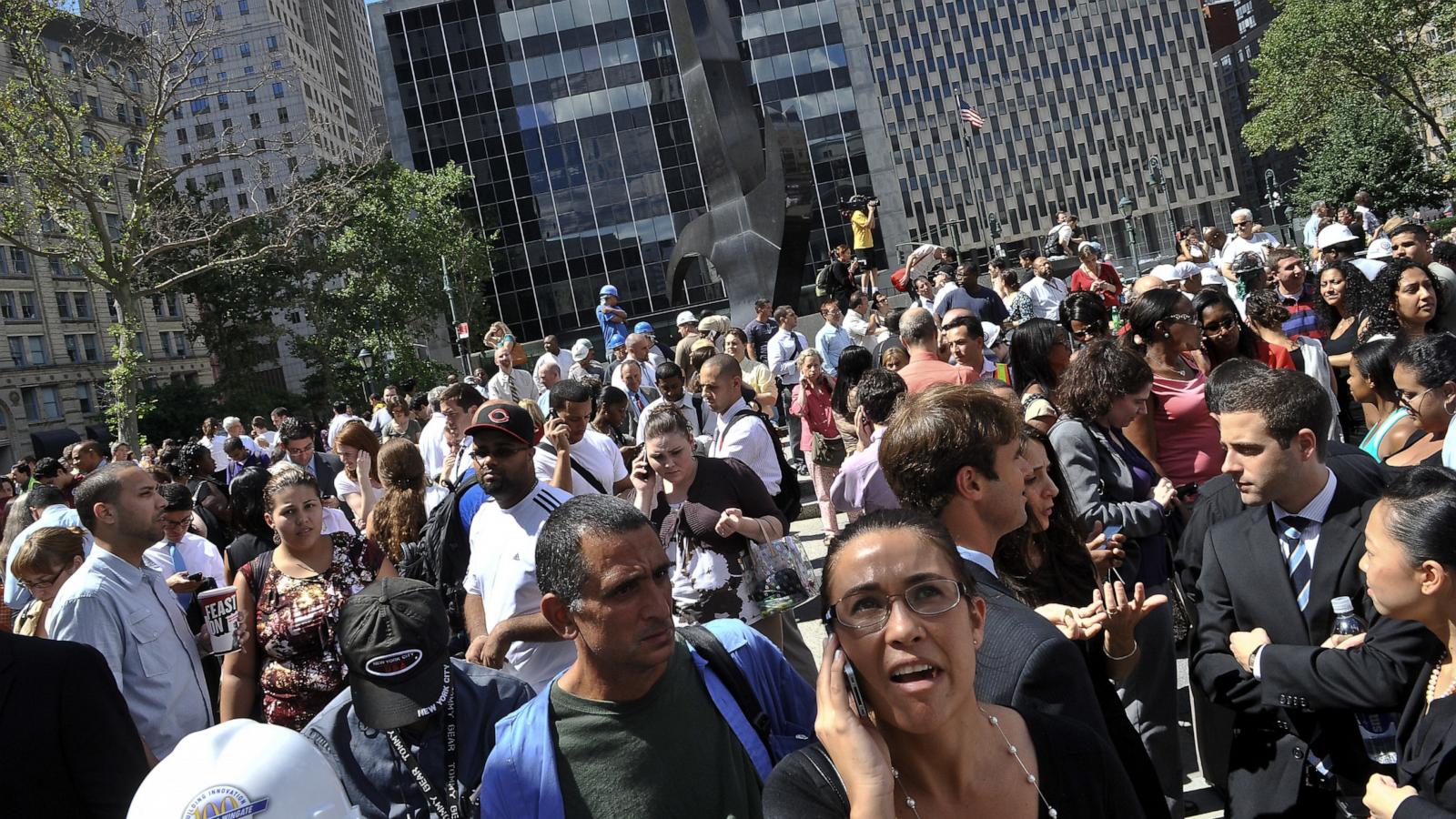
A 4.8-magnitude earthquake rattled the New York City region Friday morning — marking one of the strongest earthquakes on the East Coast in the last century, officials said.
The earthquake was centered near Whitehouse Station, New Jersey, according to the U.S. Geological Survey. There is a low likelihood of casualties and damage, USGS said.
Earthquakes along the Atlantic Seaboard are “uncommon but not unheard of” and tend to be felt by a broader swath of people than those that occur on the West Coast, according to USGS. That’s because the rocks in the Earth’s crust in the east are older and more rigid, causing seismic energy to travel more efficiently, according to the agency.
Here’s a look at notable earthquakes to impact the region.
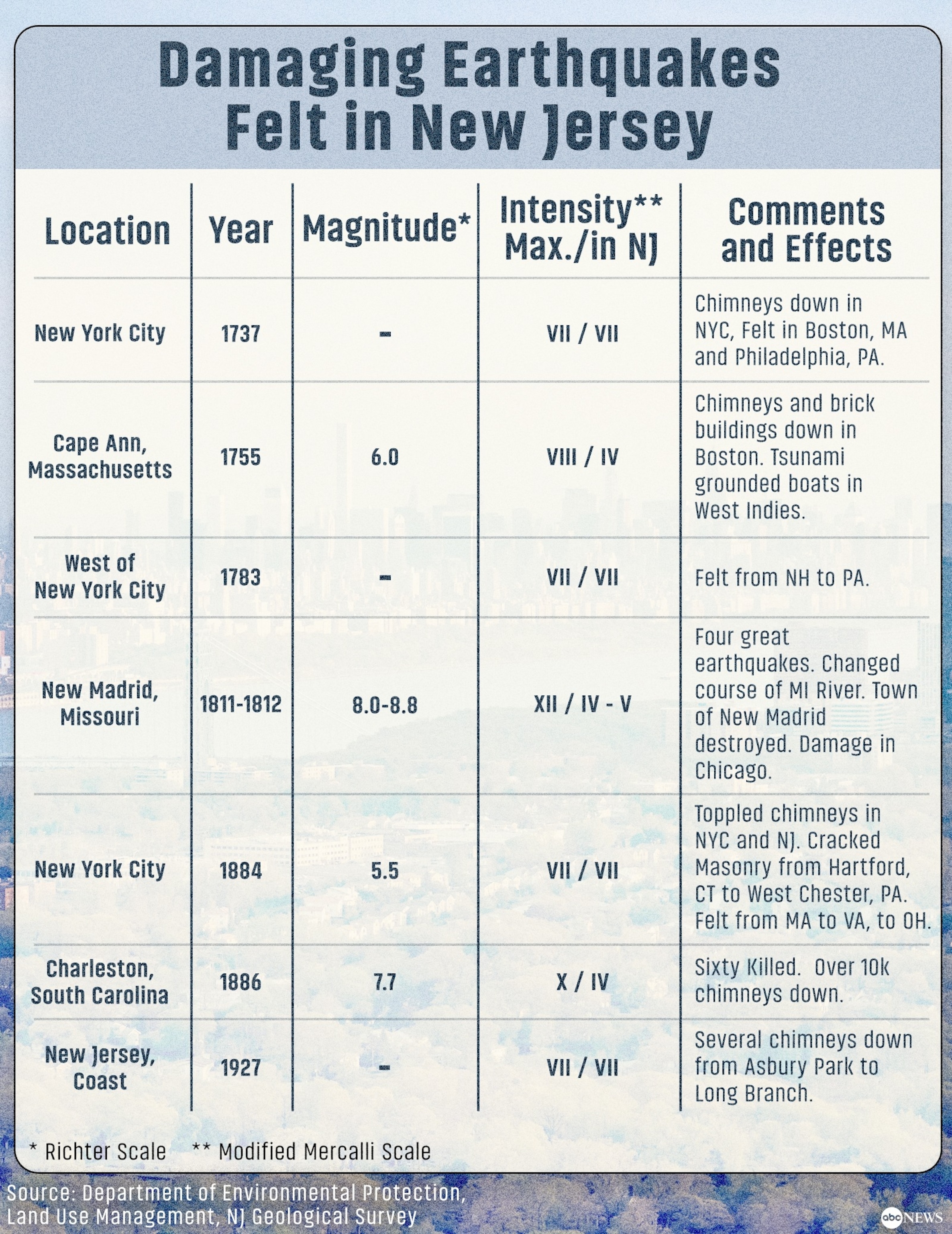
Damaging Earthquakes Felt in New Jersey
Dep. of Environmental Protection, Land Use Management, NJ Geological Survey
1737
A 5.2-magnitude earthquake on Dec. 19, 1737, in the greater NYC area caused chimneys to fall, according to the New Jersey Office of Emergency Management (OEM). It measured at an intensity of VII on the Mercalli Intensity Scale, according to the New Jersey Department of Environmental Protection (DEP).
1783
The strongest earthquake to impact New Jersey occurred on Nov. 30, 1783, west of NYC, according to NJ OEM. The 5.3-magnitude, intensity VII quake was felt from New Hampshire to Pennsylvania and also knocked down chimneys, the agency said.
1884
An earthquake in New York City on Aug. 10, 1884, was felt from Virginia to Maine, according to NJ DEP. The VII-intensity quake toppled chimneys in NYC and New Jersey, the agency said.
Records from NJ DEP cite the earthquake as 5.5 magnitude, while the Lamont-Doherty Earth Observatory at Columbia University and NJ OEM record it as being 5.2 magnitude.
Related Stories
The epicenter of the quake was later determined to be in Brooklyn, according to the National Museum of American History, which noted that there was extensive newspaper coverage of the incident at the time.
1895
A 4.1-magnitude earthquake near High Bridge, New Jersey, on Sept. 1, 1895, was felt “over a considerable distance” to the Northeast and Southwest, according to NJ OEM.
1985
A 4.0-magnitude earthquake in Ardsley, New Jersey, on Oct. 19, 1985, was felt by many in the NYC area, according to NJ OEM.
2011
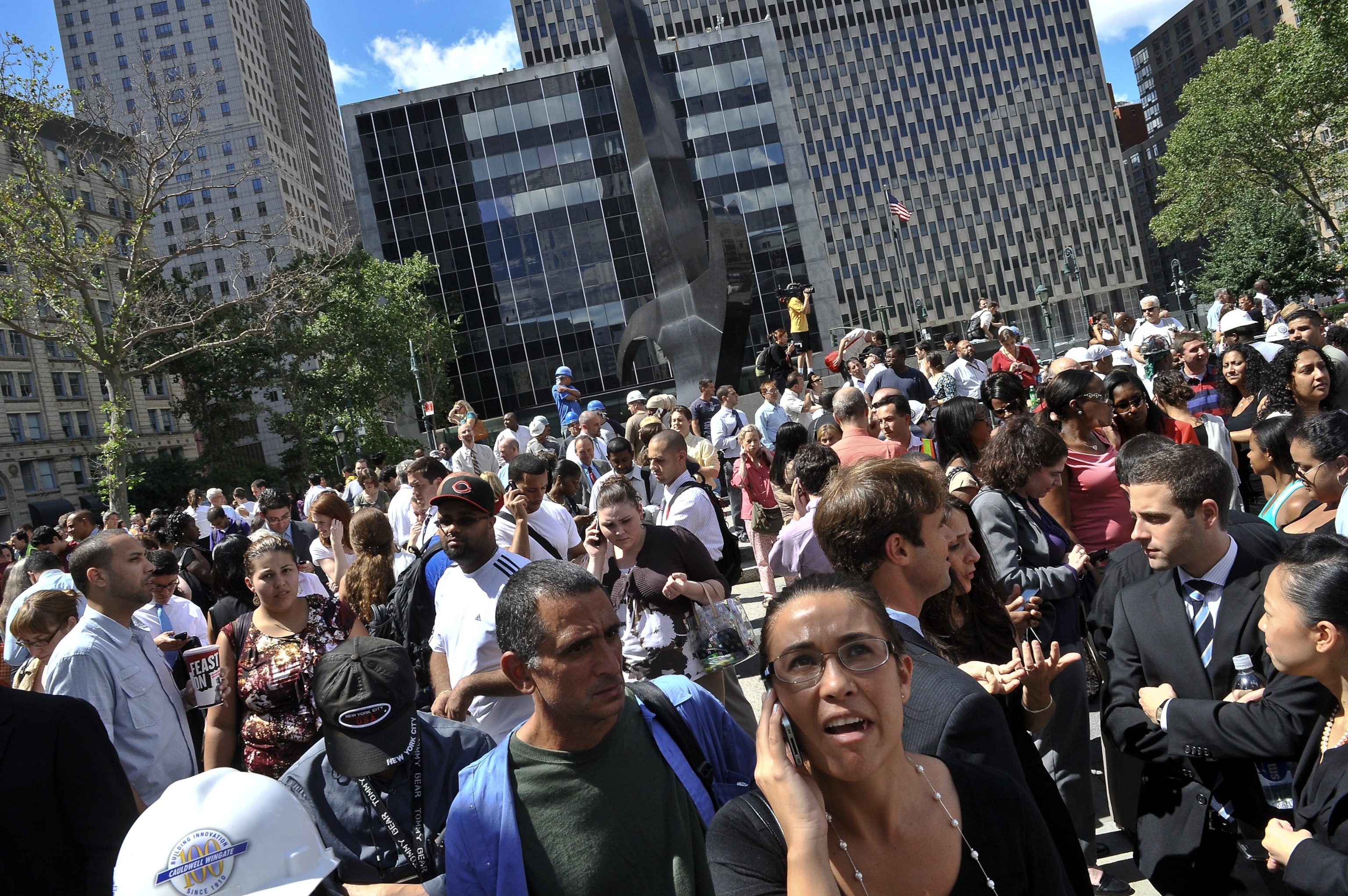
People stand in a square outside the courthouse after an earthquake was felt in New York City, Aug. 23, 2011.
Nicholas Kamm/AFP via Getty Images
Tens of millions of people along the East Coast felt the effects of a 5.8-magnitude earthquake that occurred near Mineral, Virginia, on Aug. 23, 2011, according to USGS. It was felt from Georgia to southern Canada, according to NJ OEM. The quake was the strongest in the eastern U.S. since a 5.8-magnitude earthquake in 1944 near Cornwall, New York, according to USGS.
2024
Shaking was felt from Maine to Washington, D.C., after a 4.8-magnitude earthquake struck near Whitehouse Station, New Jersey, on Friday, according to USGS. New York Gov. Kathy Hochul called it “one of the largest earthquakes on the East Coast in the last century.” That level of magnitude is not expected to result in much damage, according to USGS.
Based on the preliminary magnitude, the quake was the strongest with an epicenter in New Jersey since 1783, according to NJ OEM records. It was also the fourth-strongest on record in the NYC area, according to the Lamont-Doherty Earth Observatory.

